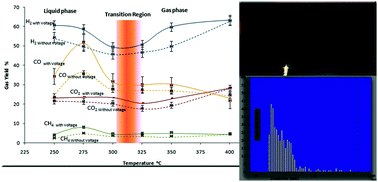Reformingglycerol under electro-statically charged surface conditions
Abstract
Catalysis is dependent on electronic interactions that occur between substrate molecules and surface atoms of a

* Corresponding authors
a
Biological and Agricultural Engineering Department, Texas A&M University, Scoates Hall, 2117 TAMU, College Station, USA
E-mail:
sfernando@tamu.edu
b Biosystems Engineering Department, Auburn University, 215 Tom Corley Building, Auburn, USA
Catalysis is dependent on electronic interactions that occur between substrate molecules and surface atoms of a

 Please wait while we load your content...
Something went wrong. Try again?
Please wait while we load your content...
Something went wrong. Try again?
G. Nawaratna, S. Adhikari, Ronald. E. Lacey and S. D. Fernando, Energy Environ. Sci., 2010, 3, 1593 DOI: 10.1039/C0EE00047G
To request permission to reproduce material from this article, please go to the Copyright Clearance Center request page.
If you are an author contributing to an RSC publication, you do not need to request permission provided correct acknowledgement is given.
If you are the author of this article, you do not need to request permission to reproduce figures and diagrams provided correct acknowledgement is given. If you want to reproduce the whole article in a third-party publication (excluding your thesis/dissertation for which permission is not required) please go to the Copyright Clearance Center request page.
Read more about how to correctly acknowledge RSC content.
 Fetching data from CrossRef.
Fetching data from CrossRef.
This may take some time to load.
Loading related content
